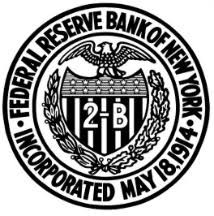Thought Leadership
The BTRM Thought Leadership series is designed to bring to light latest thinking on the future of banking and finance, including ideas and innovations that will enable the markets to serve consumers and society better. Recognising that finance is not an exact science and is as much an art, we welcome qualitative articles aimed at practitioners interested in a best-practice and honest approach to banking. Articles may focus on any area of economics, finance and banking and should be between 1500 and 3500 words. We encourage accessibility, transparency and clear language.
Disclaimer: AI policy for Authors
Authors may use generative artificial intelligence (AI), AI-assisted tools and large language models (collectively “AI”) in the preparation of their article, provided they: (i) disclose how and where AI was used; and (ii) ensure that the use of AI does not infringe on existing copyrights.
Authors are responsible for all information contained in their article, including the use of AI in writing the article, the collection and analysis of information and data, and the generation of images and graphics. Authors should carefully review and edit the output from the AI tools they have used to ensure it is correct, complete and unbiased. Authors should also ensure that the use of AI does not contravene copyright rights of third parties. AI tools cannot be listed as an author of a paper.
Authors should declare their use of AI as separate text at the end of the paper, before the references, entitled “Use of artificial intelligence”. In this section, the author(s) should state which tools they used, how used, and the extent to which those tools were used. Author(s) must include the following statement: “I (we) have reviewed and edited the content produced by AI tools and am (are) fully responsible for the information contained in the article”.
A Primer on Hedging FX Risk of Overseas Lending
– November 2025
by Professor Jessica James, Faculty BTRM
Our very own Professor Jessica James presents a neat and succinct introductory piece on a common issue amongst many of the world’s banks: how to address the market risk problem arising when lending to overseas customers, in their domestic currency, when the loan is funded in one’s own domestic currency. Or indeed when lending in any currency that is not one’s reporting currency. An FX Forward is the immediate solution, of course, but these are shorter tenor than most corporate loans, and may not address “second order” risk. Cue the cross-currency swap. This article is an accessible primer, elegantly written!
View Content
SOT NII: Harmonisation Hits a Floor of Heterogeneity – here’s how to fix it
– October 2025
by Konrad Kompa and Jacek Rzeznik, mBank
Interest-rate risk in the banking book (IRRBB) has been causing banker’s brows to furrow from the moment the Basel Committee published BCBS368 back in 2016. And various national regulators have added to the debating points at every bank’s ALCO ever since. One of the topics in this space that it’s worth spending some time on is the European Banking Authority (EBA) Supervisor Outlier Test (SoT) on Net Interest Income (NII) Delta. (It’s acronym City here!).
The SoT NII is a risk stress test measure aimed at addressing earnings sensitivity to interest-rate shocks, and the resulting impact on a bank’s capital base. According to authors Konrad Kompa and Jacek Rzeznik, who are with mBank in Warsaw, the unintended consequences of this regulation are worth reviewing. They argue that given the heterogeneity in European Union banks, this measure is not necessarily optimising risk management of interest-rate risk: they very helpfully provide five alternative approaches that would address better the risk that SoT NII is aimed at. Well worth a read for all IRRBB managers and ALCO Chairs.
View Content
Stablecoins, Stablecoins, Stablecoins
– October 2025
by Agnes Aistleitner Kisuule: First Circle Capital
BTRM has been observing the fast-moving world of “crypto” assets and “DeFI” as keenly as any observer, if only because developments in this space will impact bank balance sheets, indirectly or indirectly, in due course, in one way or another. A significant product class in DeFi is the Stablecoin. However stablecoins exist in a variety of forms, and it can be a bit of a maze working one’s way through one version, or “ecosystem”, after another.
So we’re grateful to Agnes Aistleitner Kisuule for this submission to our Thought Leadership series. Her paper is written in conversational style, which is perfect because her views will invite debate right from the start. Her introduction states:
“There are different types of stablecoins: currency-backed, algorithmic, and asset-backed, but this paper concerns itself only with currency-backed stablecoins. I would argue that no stablecoin is fundamentally changing anything. Stablecoins are built on the distributed ledger technology blockchain……It might optimize some processes, but at a high level, we do not want finance to be “fundamentally” changed by it without much needed safeguards.
“The growth of stablecoins also fits into a longer trend of partial disintermediation from banking. Over recent decades, households and firms have shifted funds out of [bank] deposits and into money-market funds, fintech wallets, and capital markets. Stablecoins extend this trend by drawing deposits out of banks and placing them [indirectly] into treasuries through private issuers.”
Plenty to agree or disagree with right there! We think anyone interested in DeFI and digital assets will enjoy reading this paper.
View Content
Bank Stress Testing: A Practitioner’s Guide
– September 2025
by Paul Harrald – sepiks.ai
The papers that the BTRM loves the most are ones where the content can be assimilated and applied instantly. Anyone involved in any part of the “stress testing” process at banks will wish to read our latest Thought Leadership Series article. Written by Paul Harrald, it describes in clear succinct language a best-practice approach to crafting stress test scenarios – the “storyboards” that many regulatory authorities like to see – for different type of stress test. Mr Harrald lists pretty much the full spectrum of risk exposure types and provides practical examples of how one can go about articulating them. We particularly liked the “Digital Bank Run” resilience checklist on page 52. A very worthwhile read for all bank balance sheet managers and ILAAP authors / reviewers. Our thanks to Paul for submitting the article.
View Content
Fit for Purpose: a back to basics way of calculating the Term Liquidity Premium
– August 2025
by Professor Jessica James et al
Understanding, and appreciating, the term liquidity premium – in any currency – is an important part of the bank balance sheet manager’s ALM thought processes. BTRM Faculty member Jessica James, and her colleagues Michael Leister and Christopher Rieger, have published a wonderfully accessible article that describes exactly how one can estimate the TLP from observed market yield curves. This first appeared in Quantitative Finance earlier this year, we’re pleased to reproduce it here with permission. As the authors note in the Abstract, “…..even the most sophisticated [model estimates for TLP] can be replicated by a simple linear combination of a few liquid interest rates for the USD and EUR markets.” Well worth a read by all Treasurers, CFOs and CROs!
View Content
Bank balance sheet management and the need for technical training
– April 2025 (first issued April 2015)
by Professor Moorad Choudhry
Cohort 21 of the BTRM started this month and for the first time we registered 100 students on a single cohort….we thought it opportune to reprise this piece from our Founder, Professor Moorad Choudhry which appeared in the PRMIA journal Intelligent Risk exactly 10 years ago. In the article Professor Choudhry notes how, unlike many other subjects covered in professional and academic qualifications in finance, asset-liability management (ALM) is a discipline that must be, and is, practiced by every bank in the world, bar none. Congratulations on over 10 years of the BTRM Professor!
View Content
Treasury Management in Modern Challenger Banks: Designing a Regulatory – Compliant Operating Model
– November 2024
by Neophytos Kathitziotis
A common question asked of The BTRM is, “What is the optimum Treasury operating model in banks?” As is so often the case in finance, the answer starts with “It depends!”. Neophytos Kathitziotis presents for our Thought Leadership series a succinct and accessible account of alternative approaches for the bank Treasury function, aimed at neo-banks and challenger banks. The article takes as its cue regulatory guidance and builds from there. A timely piece, given the number of challenger banks being set up around the world today!
View Content
Cryptodollars and the Hierarchy of Money
– November 2024
by Sébastien Derivaux
US Dollar stablecoins are onchain financial instruments representing a dollar equivalent. This paper focuses on a subset of stablecoins, cryptodollars, which we define as redeemable for ’higher-level’ money in the hierarchy of money. By analyzing primary market issuance and redemptions, we demonstrate that these stablecoins have provided reliable value (’maintained par’) in the currently available market infrastructure. With sensible management/regulation and further maturation of market infrastructure, cryptodollars have the potential to i) lower secondary market volatility, ii) broader onchain financial impact, as well as deeper integration between on-and offchain ecosystems.
View Content
Cloud based technologies and Regulatory Compliance: A 3-part series
– October 2024
by Jaffar Hussain: Group Head of Liquidity and Market Risk, National Bank of Bahrain
A 3-part series of articles on how banking regulations have presented banks with a costly challenge of having to maintain an expensive analytical and technological
infrastructure in order to meet new regulatory requirements. These articles present a solution which will reduce the cost of regulatory compliance significantly.
The author describes an analytical framework for managing credit risk and running credit stress tests which meets regulatory requirements and can be built entirely in the Cloud using the Hadoop ecosystem to manage data, and Python to manage the analytical algorithm. The goal is to convince the reader that open-source technologies can enable banks today to reduce the cost of regulatory compliance to a small fraction of what banks currently spend.
View Content part 1
View Content part 2
View Content part 3
Bank liquidity risk management through stable and volatile markets: The role of ALCO and lessons learned for the balance sheet governance operating model
– June 2024
by Professor Moorad Choudhry, Claire Trythall, Diyama Abu Laban
Published in Journal of Risk Management in Financial Institutions (Vol. 17, No.3). From the Abstract:
This study examines the balance sheet management governance operating model of selected failed banks from 2007, 2008, 2009 and 2023, with emphasis on the corporate governance structure in place and the position of the asset-liability committee (ALCO), and draws conclusions and recommendations for future policy. All failed sample banks exhibited near-identical governance frameworks for management and oversight of balance sheet risk: namely an ALCO that reported to the senior executive management committee, and was at least two levels, if not three levels, below board level. It is inferred that, as the ultimate responsible and accountable forum for ensuring balance sheet viability and continuing going concern of the bank, the board would benefit from being closer to the balance sheet risk management process. This implies changing the governance structure such that the ALCO is closer to the board itself, and able to provide direct comfort to the board that the bank’s capital and liquidity risks are being managed appropriately.
View Content
Special Guest Lecture, Birzeit University, West Bank, Palestine
– May 2024
Professor Choudhry’s lecture at the Department of Finance and Banking, Birzeit University, titled “Bank risk management: the old…and the new”
View Content
Presentation to Banco Central do Brasil
– April 2024
by Professor Choudhry
Professor Choudhry’s lecture at BACEN on Pillar 2 Liquidity Risk Management and lessons learned from 2023 bank failures
View Content
Presentation to Nubank Risk Management Team
– April 2024
by Professor Choudhry
Professor Choudhry’s presentation on risk culture and how to make risk management real…
View Content
Risk Governance in Banking
– March 2024
by Professor Choudhry
Professor Choudhry’s slide deck on “Risk Governance in Banking”, which he presented at the Bangladesh Institute of Bank Management, Dhaka on 31st March 2024. In the lecture the importance of the right “risk culture” was highlighted as the key ingredient enabling effective implementation of risk management policies.
View Content
BTRM Core Text 2023
The Principles of Banking, 2nd Edition is the core text of the BTRM syllabus programme. This file introduces the book’s Table of Contents, Preface and Afterword.
View Content
CISI TV Interview: The Banking Sector Today (Video Discussion) – April 2023
As part of its CPD series, George Littlejohn, Senior Advisor at The Chartered Institute for Securities & Investment, invited Professor Moorad Choudhry to discuss various aspects of topical issue in banking today…amongst other things the conversation covered Silicon Valley Bank, a bank’s risk management framework and risk register, Board effectiveness and the qualities of Neal Ardley as a teambuilder and leader! All in 16 minutes.
View Video
Implementing PRA CP4/23: The Strong and Simple Framework – March 2023
by Claire Trythall
The PRA has just published CP4/23, which describes changes to the prudential liquidity risk and reporting framework for non-systemic UK banks. This is expected to result in material reduction in the regulatory compliance burden, whilst retaining the requirement to maintain a robust balance sheet. The consultation paper is 45 pages long, in our latest Thought Leadership article Claire Trythall distils all the key points into 4 pages….
View Content
Is Blockchain the real failure? – January 2023
by Periklis Thivaios
The bankruptcy of FTX and other recent crypto ecosystem failures have not shaken the pervasive belief in the value and potential of blockchain, the technology underlying crypto assets.
Yet, blockchain applications have (up until now, at least) failed to transform – let alone disrupt – any industry, despite the billions of dollars invested in the technology over the past decade.
View Content
From Pandemic to Financial Contagion: High-Frequency Risk Metrics and Bayesian Volatility Analysis – February 2021
by Milivoje Davidovic
This is an academic journal article, and specifically an event-based study that uses intraday (hourly) log returns to quantify Conditional Value-at-Risk and MCMC stochastic volatility levels before and during the Covid-19 pandemic (January 2019–June 2020) across the stock, commodity and cryptocurrency markets.
The author’s results indicate increased pandemic-induced risk exposure (using the expected shortfall measure), increasing volatility, and stronger cross-market integration. Such effects might reduce the potential benefits of cross-market hedging and hence, potentially, contribute to a global financial contagion. This in turn would impose an additional constraint in banks’ risk management strategy, as well as on the national macroprudential policy framework.
From a practitioner perspective we conclude therefore that at the present time, until the crisis has played out more fully, banks follow a more rather than less risk averse asset origination and funding strategy.
View Content
An overview of Basel III/IV key segments and EU CRDV – September 2020
by Professor Moorad Choudhry
The final strands of Basel III guidelines have implications for some banks that are as significant as the original tenets from 2008-10! For this reason many commentators have taken to calling it “Basel IV”, despite the fact that this is not its formal designation. In this summary we present an overview of the key segments of “Basel IV”, as implemented in the European Union under the label “CRDV”. We also suggest that the requirements of “MREL” are a “Pillar 4” to add to the original 3 Pillar approach of Basel II/III. And all acronyms are explained in the slide deck!
View Content
Analysis of bond market sensitivity to economic news when monetary policy is constrained by limitations: an ALM desk perspective – July 2019
by Balamurali Radhakrishnan
Our occasional contributor Balamurali Radhakrishnan makes a welcome return to BTRM with a succinct but incisive piece on a commonly discussed theme, that of monetary policy and zero interest rates, but from the much less commonly observed perspective of the bank’s ALM desk. We’re sure you’ll like the piece.
View Content
The ALCO: Template Terms of Reference – January 2019
by Professor Moorad Choudhry
Following on from Part I of our feature last month on the bank’s asset-liability committee (ALCO), and how to make it more “real” and effective, we now present Part II, which is our recommended template ALCO Terms of Reference. This file is taken from the website accompanying the book Moorad Choudhry Anthology, and is designed for small and large commercial banking institutions alike.
View Content
The ALCO: making the most important bank committee more effective and more real – November 2018
by Professor Moorad Choudhry
Ringo Starr entitled his compilation album Blast From The Past. On occasion when speaking or writing about the importance of a bank’s asset-liability committee (ALCO) and how to ensure it remains fit-for-purpose, I’m reminded of that charming exercise in nostalgia. Some topics remain important in perpetuity, and in banking making the ALCO effective is one of them.
View Content
ICAAP Best-Practice Principles High Level Summary – October 2018
by Professor Moorad Choudhry
Further to my recent ICAAP Case Study example shared here a few weeks ago, the link below is to the associated slide deck on high level best-practice principles for the ICAAP process. It’s taken from the website for the book “Anthology: Past, Present and Future Principles of Banking and Finance”, published this summer by John Wiley and Sons Ltd. Unsurprisingly, the ICAAP topic covers an entire chapter of that book!
Practical issues in yield curve construction – October 2018
by Professor Moorad Choudhry
While regulatory requirements and balance sheet risk management topics occupy a large chunk of Anthology: Past, Present and Future Principles of Banking and Finance, practical considerations in other aspects of banking must still occupy our focus! The link below is to a presentation from the book’s associated website, entitled “Market Inputs to the Yield Curve”, and is an accessible summary of what types of curve building methods one should consider using – as we see, the answer, like so much in finance, begins with “It depends….”, and in this case it depends on what exactly one is using the yield curve for. There is, as usual, more than one “right” answer…
View Content
ICAAP review and challenge and specimen ToC – October 2018
by Professor Moorad Choudhry
A bank’s ICAAP submission is a comprehensive document and a time- and resource-intensive process. There are many nuances to it, and of course the ultimate objective is to demonstrate that the bank is adequately capitalised under all plausible, yet severe, stress events. The topic occupies an entire chapter in “Anthology: Past, Present and Future Principles of Banking and Finance“, while the book’s companion website contains a slide deck on ICAAP Best-Practice Principles. Also on the website is the file given at the link below, which is an extract from a “review and challenge” of certain aspects of an hypothetical ICAAP, including the stress scenario setting process. It also suggests a specimen Table of Contents. I hope to follow this up with an extract from the best-practice slide deck in due course.
View Content
Understanding your Net Interest Margin (NIM) – September 2018
by Professor Moorad Choudhry & Chris Westcott
With the strategic ALM objectives of bank balance sheet management nowadays to the fore, being aware of the expected impact on NIM following multi-scenario changes in rates, spreads and product types, both short- and long-term, becomes ever more important. The link below presents a vanilla case study for NIM sensitivity analysis in Excel format, written by my co-author Chris Westcott, and is extracted from the accompanying website for “Anthology: Past, Present and Future Principles of Banking and Finance” (Wiley 2018). Of course in practice there are a lot more scenarios to model, but this worksheet is an excellent demonstration of the fundamentals.
View Content
ALM and risk management: it’s a bank-wide discipline – August 2018
by Professor Moorad Choudhry
More and more banks are offering (or indeed in some cases requiring!) their front-line RMs and other customer-facing staff some form of in-house Certification that ties in disciplines such as customer service with balance sheet risk management topics.
It’s something I discuss in Anthology: Past, Present and Future Principles of Banking and Finance (John Wiley & Sons 2018), exactly what form and content such a programme of learning should exhibit. The attached is a high-level summary of the learning outcomes that one might expect to see in a well-constructed in-house certificate on banking best-practice.
View Content
The “Libor Term Premium” – August 2018
by Professor Moorad Choudhry
Here’s a Blast From The Past (no, not the Ringo Starr compilation album) that is a talking point again now the market is going to be replacing LIBOR with a new reference, which will differ for USD, GBP and EUR. In GBP the replacement SONIA rate (hopefully quoted as a 3M and 6M SONIA fixing, although that’s to be confirmed) may incorporate a credit premium at outset, reflecting that Libor always had one and Sonia doesn’t. And what is the Libor-Sonia differential? At present it’s about 12 bps, but of course it fluctuates. But in fact understanding the original overnight-3M Libor Term Premium was worthwhile even pre-crash…here we re-present Chapter 10 from Professor Choudhry’s book “Bank Asset-Liability Management”, published in April 2007, which talks about just that. A Golden Oldie to remind us that we should be thinking seriously about the ALM impact of, and management actions required by, the SONIA replacement reference rate.
View Content
Managing Intraday Liquidity – April 2018
by Christian Buschmann & Holger Westermann
According to Jurgilas and Žikeš (2012), almost every central bank regime distinct between overnight liquidity and intraday liquidity in their monetary policy frameworks. This distinction can be either done explicitly, in terms of interest rates charged, or implicitly, through different eligibility criteria for collateral.
View Content
Machine Learning in Banking: How to Transform Balance Sheet Management and Customer Service Provision – April 2018
by Professor Moorad Choudhry
Moorad Choudhry’s article on using machine learning systems in banking, and how their adoption can transform a large number of processes from front to back… published this month in The European Financial Review (Apr-May 2018).
View Content
Derivatives, Collateral Management, “mVA” and NSFR – March 2018
by Professor Moorad Choudhry & Kevin Liddy
The cocktail of acronyms introducing this post should be enough to make most people run (at least) a country mile, however for all banks that use derivatives they represent some very important balance sheet management issues, at least for Treasury, Risk and Finance people plus anyone with an interest in optimising Margin Value Adjustment (mVA)and the impact of derivatives collateral cashflows on net stable funding ratio (NSFR). The attached presentation is from a co-author of mine Mr Kevin Liddy, and is taken from the website for my new book “Anthology: Past, Present and Future Principles of Banking and Finance“. It highlights all the key items that need to be addressed not just by dealer banks but also any bank that uses derivatives to for structural balance sheet hedging.
View Content
ALCO Approval Submission Template – March 2018
by Professor Moorad Choudhry
The asset-liability committee (ALCO) is, or should be, the paramount balance sheet risk forum and authority in any bank, and I dedicate an entire chapter (Chapter 10) of my forthcoming book “Anthology: Past, Present and Future Principles of Banking and Finance” to discussing best-practice for ALCO governance and infrastructure. As a “taster”, attached here is a template that one would use for an ALCO approval submission paper, taken from the book’s associated website.
View Content
Anthology: Promo 2-chapter e-Minibook – March 2018
by Professor Moorad Choudhry
It only took 6 years (!), but happy now to report that my book “Anthology: Past. Present and Future Principles of Banking and Finance” is published today by John Wiley & Sons. As a taster, attached here is a 2-chapter e-Minibook (an extract from Part IV of the book, which is on Strategy, Governance and Culture). I do hope you find the e-Minibook, as well as the book itself, of value.
View Content
Funds Transfer Pricing Best-Practice Principles – March 2018
by Professor Moorad Choudhry
In response to requests for more detail on the opaque “FTP” topic that I discussed last week, and ahead of publication of my book “Anthology: Past, Present and Future Principles of Banking and Finance” (being published by John Wiley & Sons Ltd on 4th April), I present here an extract from the book’s companion website, a slide deck on “FTP best-practice principles”.
View Content
Understanding the Supervisory Review and Evaluation Process (SREP) – March 2018
by Professor Moorad Choudhry & Dr. Polina Bardaeva
Ahead of the publication next month of Anthology: Past, Present and Future Principles of Banking and Finance, I present here an extract from the book’s companion website. The Supervisory Review and Evaluation Process (SREP) is essentially the regulator’s assessment of a bank’s capital adequacy (with similar L-SREP for liquidity) and the slide deck, co-written with Dr. Polina Bardaeva, is an accessible and succinct summary to understanding the SREP’s critical details. We hope you find it of value.
View Content
Bank funds transfer pricing: keeping it simple but effective – March 2018
by Professor Moorad Choudhry
Internal funds transfer pricing in banks is one of the more arcane (not to mention turgid) topics in finance. But FTP is an important part of the liquidity risk management framework, hence the importance attached to it by regulatory authorities. As such, the subject occupies a good chunk of the chapter on liquidity management in my forthcoming book Anthology: Past, Present and Future Principles of Banking and Finance. Ahead of the publication of Anthology next month, here is a brief intro to the topic around the theme of keeping things simple, but effective.
View Content
Template Board Risk Appetite Statement – February 2018
by Professor Moorad Choudhry
Ahead of the publication of Moorad Choudhry’s book “Anthology: Past, Present and Future Principles of Banking and Finance“, we present an extract from that publication which is a recommended template Board Risk Appetite Statement, as formatted for the hypothetical commercial bank “ABC Bank Ltd”. An explicit Board Risk statement that specifies both quantitative and qualitative risk limits is the first step to robust and long-term sustainable balance sheet management.
View Content
Bank Liquidity and Capital Best-Practice Principles, 2-Chapter e-Minibook – February 2018
by Professor Moorad Choudhry
With the publication last month from BCBS of the final chapter in Basel III, the key part of which confirmed the 72.5% output floor for RWAs applicable to any bank that applies an internal ratings based approach, firms can now proceed with their final form capital and liquidity management and planning, since every piece of the puzzle is now in place. Of course the core tenets of Basel III have been known since 2010…in that regard, and in anticipation of the publication next month of Moorad Choudhry Anthology, we present Chapters 12 and 16 from his earlier book The Principles of Banking. The first chapter discusses the liquidity risk management aspect of Basel III and its impact, while the second chapter considers both the capital and strategy-setting impact of that regulatory directive. While some banks are affected more than others, there is no doubt that every bank will wish to structure as optimised a balance sheet as possible.
View Content
Bank Treasury Best Practice: Balance Sheet Optimisation in the Era of Basel III
by Team BTRM
View ContentStrategic ALM and Integrated Balance Sheet Management: The Future of Bank Risk Management
by Professor Moorad Choudhry
The traditional approach to asset-liability management (ALM) practice in banks operated as a reactive process following product origination by the customer-facing business. In the Basel III era a more proactive approach to ALM is required, in order to manage the balance sheet from an effective viability and sustainability standpoint. The article describes proactive “Strategic ALM” discipline and its implementation process.
Taken from The European Financial Review, Aug-Sep 2017 (http://www.europeanfinancialreview.com/?p=17469).
View Content
De-Stress Tests for Strategic Treasury
by David Castle
May 2017
View Content
Hypothesis: Risk, like Mass and Energy, Can Neither be Created nor Destroyed
Discuss, CISI, The Review of Financial Markets, issue 13, p6-8, Quarter 2, May 2017.
by Q G Rayer and W Dickson (2017)
This article was originally published in the CISI members’ magazine The Review.
Republished with permission.
Courtesy of P1 Investment Management
View Content
Finance and Financial Economics
by Pablo Fernandez, University of Navarra – IESE Business School
Reproduced with permission from SSRN. First published 30 Jan 2017.
View Content
Analysing and Interpreting the Yield Curve
by Professor Moorad Choudhry
A golden oldie by Professor Moorad Choudhry from his series of internal presentations at RBS Global Banking & Markets during 2011…
View Content
Decoding Distress
by Jaafar Hussain, VP and Quantitative Analyst at Bank ABC, Bahrain
February 2017
Given recent news surrounding Deutsche Bank and the speculation about its financial position, Jaafar Hussain, VP in Market Risk Management at Bank ABC explains the framework that the bank uses to monitor the financial health of such financial institutions.
View Content
Best-practice Funds Transfer Pricing Principles
by Professor Moorad Choudhry
January 2017
View Content
Basel III LCR is a business model changer: How will it impact your bank?
by Professor Moorad Choudhry
December 2016
Compliance with Basel III LCR carries implications for banks beyond merely a robust liquidity management regime.
Professor Moorad Choudhry considers some wider issues…
































